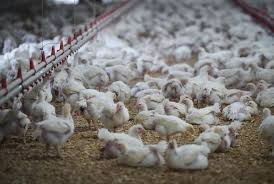The rising cost of eggs in the United States has been making headlines, with media coverage pointing to avian flu as the major culprit. This highly contagious virus has wreaked havoc on poultry farms since 2022, leading to the death of millions of birds. To curb its spread, infected flocks have been culled en masse in a process known as “depopulation,” resulting in the loss of approximately 150 million birds. However, while avian flu is at the center of the discussion, there are deeper issues within modern poultry farming that often go unnoticed.
The Growing Threat of Avian Flu
Avian flu is not a new threat; it has been circulating in both wild and domesticated birds for years. However, recent mutations have made certain strains more virulent, increasing the risk of outbreaks in poultry farms. The virus has also been spreading beyond poultry, affecting wild animals in remote regions, zoo animals, and even cattle in the U.S. A few human cases have also been reported, primarily among poultry workers. Although human-to-human transmission has not yet occurred, the potential for a pandemic remains a serious concern.
The Reality of Modern Poultry Farming
While media reports often focus on the high number of birds culled due to avian flu, they rarely highlight the staggering scale of poultry production. In the U.S. alone, around 9.5 billion chickens are slaughtered annually, contributing to the 76 billion chickens processed worldwide. Poultry now makes up 70% of all bird biomass on Earth, with most birds being raised in massive, densely packed farms.
Chickens today are selectively bred to either gain weight quickly (broilers) or lay eggs at an accelerated pace (layers). Broilers reach market weight in just six weeks, while layers produce nearly an egg a day for one to two years before being culled. These rapid life cycles contribute to increased disease risks, including avian flu, as birds are kept in confined spaces with little genetic diversity.
According to the U.S. Census of Agriculture, over 97% of layer hens are housed in facilities with at least 10,000 birds, and more than 99% of broilers come from operations that sell at least 100,000 birds annually. These large-scale farms provide the perfect conditions for avian flu to mutate and spread, creating an ongoing threat to the industry.
Depopulation: The Harsh Reality
One of the least discussed aspects of avian flu outbreaks is how infected birds are culled. One common method, ventilation shutdown, involves turning off the fans that regulate air quality in poultry barns, leading to suffocation and an agonizing death for the birds. This practice, though controversial, is used to prevent the further spread of the virus. Researchers are exploring more efficient ways to conduct mass culling, highlighting the industry’s awareness of the ongoing risks posed by infectious diseases.
Government Response and Future Risks
The issue of high egg prices has become a political talking point, particularly in the wake of the 2024 U.S. elections. President Donald Trump’s administration initially blamed Joe Biden for the depopulation of chickens, but as egg prices continued to rise, a new strategy emerged. The administration has focused on rebuilding layer populations, reducing culling, and relying on pharmaceutical solutions such as vaccines to manage avian flu outbreaks.
However, this approach is problematic. Trump’s sweeping budget cuts have weakened critical institutions like the Centers for Disease Control and Prevention (CDC) and the National Institutes of Health (NIH), reducing the country’s ability to monitor and contain infectious diseases. The U.S. has also disengaged from the World Health Organization (WHO), further diminishing its ability to respond to global health threats.
What This Means for Poultry Farmers
For farmers and poultry businesses, these developments present both challenges and opportunities. While efforts to boost egg production may stabilize prices in the short term, the underlying risks remain. The poultry industry must invest in better biosecurity measures, sustainable farming practices, and disease surveillance to prevent future crises.
At Eggora, we understand the complexities of the poultry industry and aim to keep farmers informed. The current avian flu outbreak is a wake-up call, highlighting the need for responsible poultry farming and proactive disease management.
Download Eggora Poultry App: https://www.eggora.com/download-app
